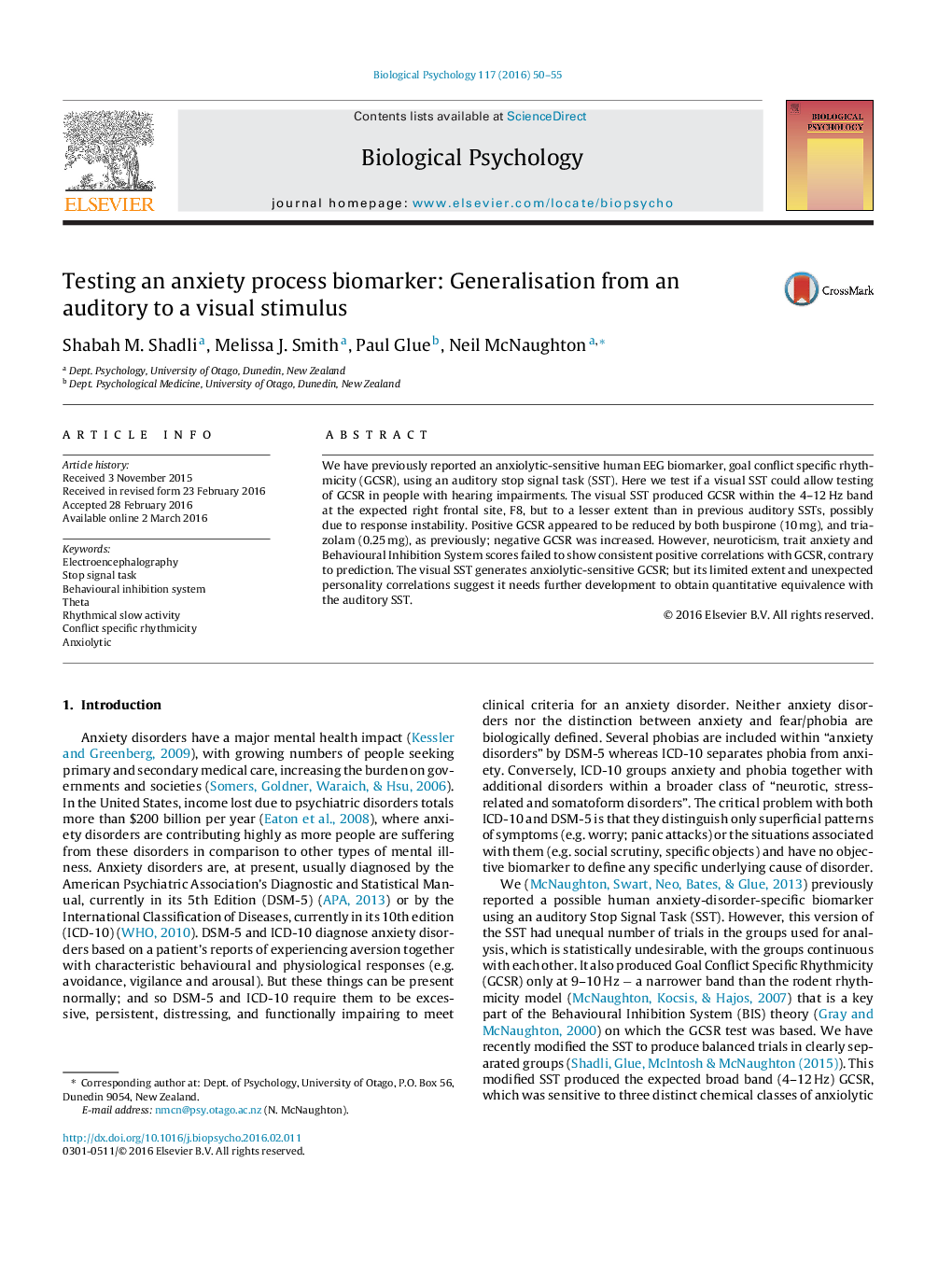| کد مقاله | کد نشریه | سال انتشار | مقاله انگلیسی | نسخه تمام متن |
|---|---|---|---|---|
| 920697 | 1473856 | 2016 | 6 صفحه PDF | دانلود رایگان |
• First report of visual elicitation of goal conflict specific rhythmicity (GCSR).
• Visual, as auditory, GCSR is sensitive to both novel and classical anxiolytic drugs.
• Failure to confirm previous weak positive personality correlations of GCSR.
We have previously reported an anxiolytic-sensitive human EEG biomarker, goal conflict specific rhythmicity (GCSR), using an auditory stop signal task (SST). Here we test if a visual SST could allow testing of GCSR in people with hearing impairments. The visual SST produced GCSR within the 4–12 Hz band at the expected right frontal site, F8, but to a lesser extent than in previous auditory SSTs, possibly due to response instability. Positive GCSR appeared to be reduced by both buspirone (10 mg), and triazolam (0.25 mg), as previously; negative GCSR was increased. However, neuroticism, trait anxiety and Behavioural Inhibition System scores failed to show consistent positive correlations with GCSR, contrary to prediction. The visual SST generates anxiolytic-sensitive GCSR; but its limited extent and unexpected personality correlations suggest it needs further development to obtain quantitative equivalence with the auditory SST.
Journal: Biological Psychology - Volume 117, May 2016, Pages 50–55
